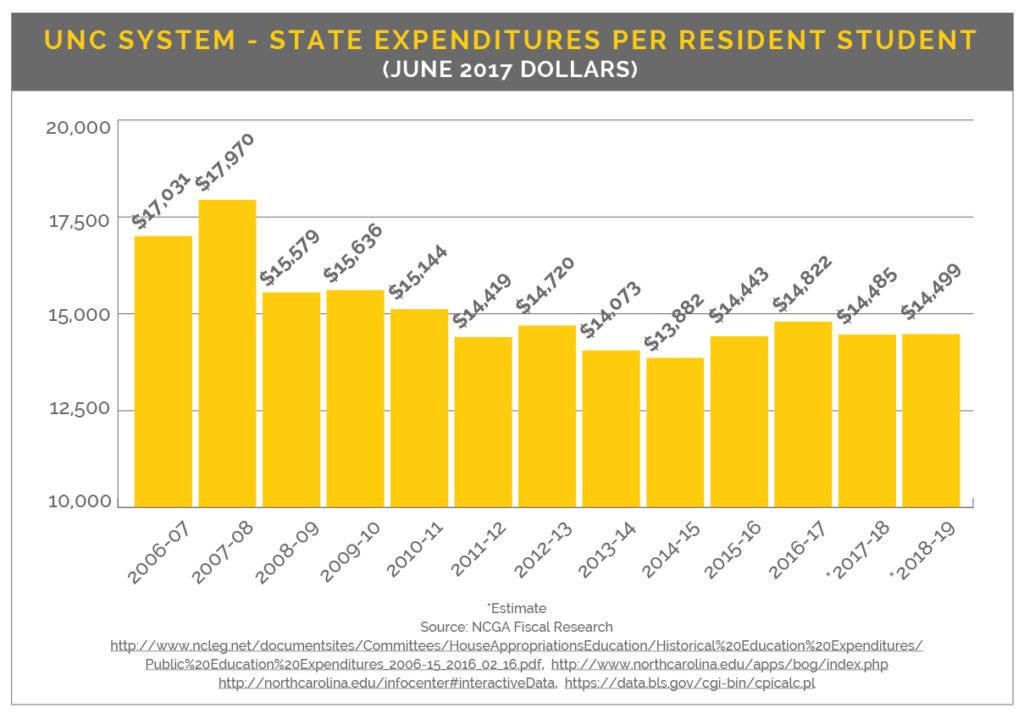RALEIGH – At best, we’re treading water.
An analysis of the budget state legislators approved in June reveals that when broken down per student, university spending is still nowhere near pre-recession levels and will essentially remain flat for the next two years.
Yes, it’s true legislators provided more money than ever for our public universities overall: $2.6 billion in 2017-18 and almost $2.7 billion in 2018-19. And for 2017-18, they inflicted no more “management-flexibility” cuts that have cost universities hundreds of millions of dollars in recent years.
But remember, North Carolina is now the 9th-largest state in the nation. Our universities expect to enroll an additional 4,000 university students this year and 5,000 more in 2018-19.
When the budget totals are broken down per student and adjusted for inflation, it becomes clear the state will supply about $300 less per student in 2017-19 than the $14,822 it supplied last year – and nowhere near the $17,970 North Carolina invested per student before the Great Recession.
As a reminder, North Carolina is one of three states with a constitutional mandate for low tuition – the state constitution requires legislators to provide that higher education “as far as practicable, be extended to the people of the State free of expense.”1
Reducing or flattening state support only adds pressure to increase tuition. And all too often, higher tuition means more student debt. Where low tuition and debt were once a source of pride to North Carolinians, the average debt carried by graduates of our public universities is now approaching the national average.2
SIMILARLY, legislators touted raises for K-12 public school teachers in the new budget that will average 9.6% over the next two years.3
After sliding to an embarrassing 47th in the nation in 2013-14, legislators did raise average teacher pay in North Carolina to $49,837 and a national rank of 35th last year – that was an encouraging step in the right direction.4 (Local pay supplements for teachers also played a role.)
New national rankings for teacher salaries won’t be published until next May. But if we take this year’s average North Carolina teacher salary of $49,837 and add 9.6%, that suggests a state average of $54,621 by 2019.
That’s still more than $4,000 below this year’s national average of $58,978 – and that national average will only continue to rise as other states raise salaries over the next two years.
Once again, it’s a step in the right direction – but not nearly enough to distinguish North Carolina.
1 http://www.ncleg.net/Legislation/constitution/ncconstitution.pdf, Article IX, Section 9.
2 http://www.higheredworks.org/2017/05/nc-disinvestment/.
3 http://www.wral.com/lawmakers-reach-23b-budget-deal/16772261/; http://www.newsobserver.com/news/politics-government/state-politics/article158589669.html.
4 http://www.nea.org/assets/docs/2017_Rankings_and_Estimates_Report-FINAL-SECURED.pdf, p. 109; http://www.wral.com/nc-ranks-35th-in-nation-for-teacher-pay-ranked-41st-last-year/16693105/.


Leave a Reply